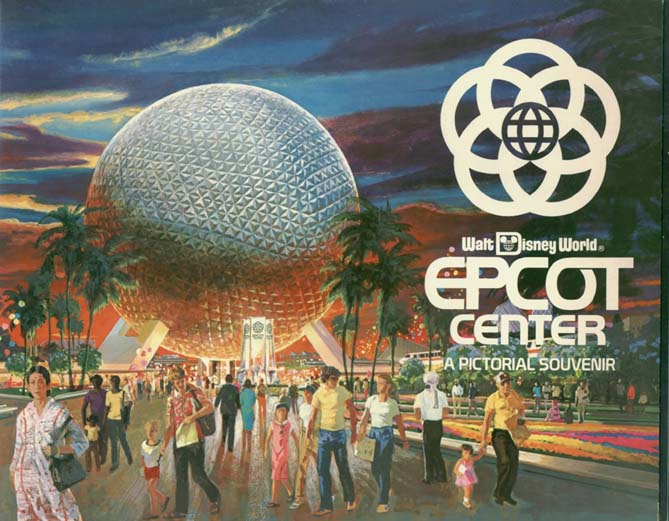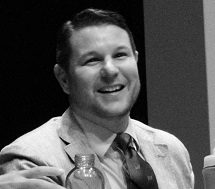If you’ve been following WDWNT, listening to any of the Disney World-themed podcasts, or checking Disney fan Facebook pages, you know that dramatic changes are afoot in Epcot. The sudden and jolting arrival of IPs (“Intellectual Properties,” such as the Guardians of the Galaxy characters) has become a dividing line among Epcot devotees. Many observers are cheering the changes and welcoming a new era of entertainment at the (in their eyes) pathetically outdated park. Others are despondent, weeping at the loss of a place for adults, free from the tyranny of princesses and film personalities. The folks over at the “Drink Around EPCOT!” Facebook page even declared the golden age of Epcot long gone, arguing that the park’s best years were 1994-2014 (many in the comments section concurred).

The recent changes have been polarizing because for most of Epcot’s existence, IPs have been marginal or entirely absent. The original attractions, as well as those erected before the 2010s, were new creations of the park Imagineers, with no tie-in to some other film or franchise. The Living Seas, the Imagination Pavilion, the World of Energy, the World of Motion, and Horizons were all unique, stand-alone attractions aiming at something deeper than just theatrics – they sought to educate, as well as entertain. Even their latter-day incarnations (Ellen’s Energy Adventure, Test Track, Mission: Space, and Journey into Imagination with Figment) were still separate from other Disney endeavors. The World Showcase, as well, was blissfully free from IPs. You could wander the pavilions and immerse yourself in other cultures without being bombarded with product placement. Guests could enjoy Epcot attractions and learn from them without ever having engaged previously with the Walt Disney Company.
And it was that lack of engagement that frustrated the accountants, suits, and money-men. They wanted attractions to inspire purchases, not some vague appreciation for human progress. Much to the dismay of Imagineers (who usually value creativity over profit), Disney executives began reimagining Epcot as a version of the Magic Kingdom, wherein every attraction (with the notable exception of fan favorites like Pirates of the Caribbean, the Haunted Mansion, Space Mountain, and Big Thunder Mountain[1]) is directly related to a pre-existing product line. The first IPs to creep into Epcot were Finding Nemo (installed in the Living Seas) and Three Caballeros (replacing El Rio del Tiempo in the Mexico Pavilion), both in 2007. Both have jettisoned creative and intellectual stimulation in favor of merchandising. In the Living Seas, guests journeyed to Sea Base Alpha where they enjoyed direct encounters with ocean life. Nemo and Friends, on the other hand, replaces the original educational intent of the attraction with a whimsical search for Nemo ending in a sing-along (and tie-in to the live stage show in the Animal Kingdom). Similarly, the current Gran Fiesta Tour Starring the Three Caballeros is a mindless sing-song that reveals nothing about the host country, while the original attraction was a thoughtful (though dated) tour of Mexico’s regions and traditions. Neither attraction is much of an improvement on the original ride, but both explicitly connect with existing merchandise lines that would yield more expenditures by guests. Ride the Nemo ride, buy a Nemo product, re-watch the Nemo film, repeat.
Over the course of the next decade, the Disney Company aggressively expanded its ownership of IPs (most notably the Star Wars universe and the motely Marvel characters) in an attempt to reach the ever-elusive demographic of tween boys, with whom Disney has traditionally been weakest. Likewise, executives sought to boost attendance at Epcot by appealing to younger guests. Hence the sudden influx of IPs: Frozen Ever After replaced the beloved Maelstrom in 2016; the Akershus Royal Banquet Hall became princess-themed character dining; the “Guardians of the Galaxy – Awesome Mix Live!” show was shoe-horned into the America Pavilion (2018); a Ratatouille ride is in the works in France; and a Guardians of the Galaxy-inspired roller-coaster will open in 2019. Of all the changes, the latter is the most difficult for Epcot traditionalists to stomach. While original, educational thrill rides like Mission: Space and Test Track are perfectly in sync with Epcot’s overall theme and concept, an IP roller-coaster seems like a jarring violation. Not only will the large boxy building ruin World Showcase sight-lines, but there does not appear to be any attempt by park executives to connect the coaster to its surrounding Future World context (education, inspiration, technology).
For many, the arrival of an IP roller-coaster marks the beginning of the end of Epcot. The attraction will doubtless boost attendance, which will likely inspire similar attractions that are likewise divorced from the Epcot concept, which may turn Epcot into another merchandising madhouse, like Hollywood Studios.
[1] The IP obsession has even led Disney executives to retroactively create IPs for several of these originally independent attractions. Pirates of the Caribbean has spawned a beloved film franchise, and the Haunted Mansion has had the cinematic treatment with a second movie in the works.

